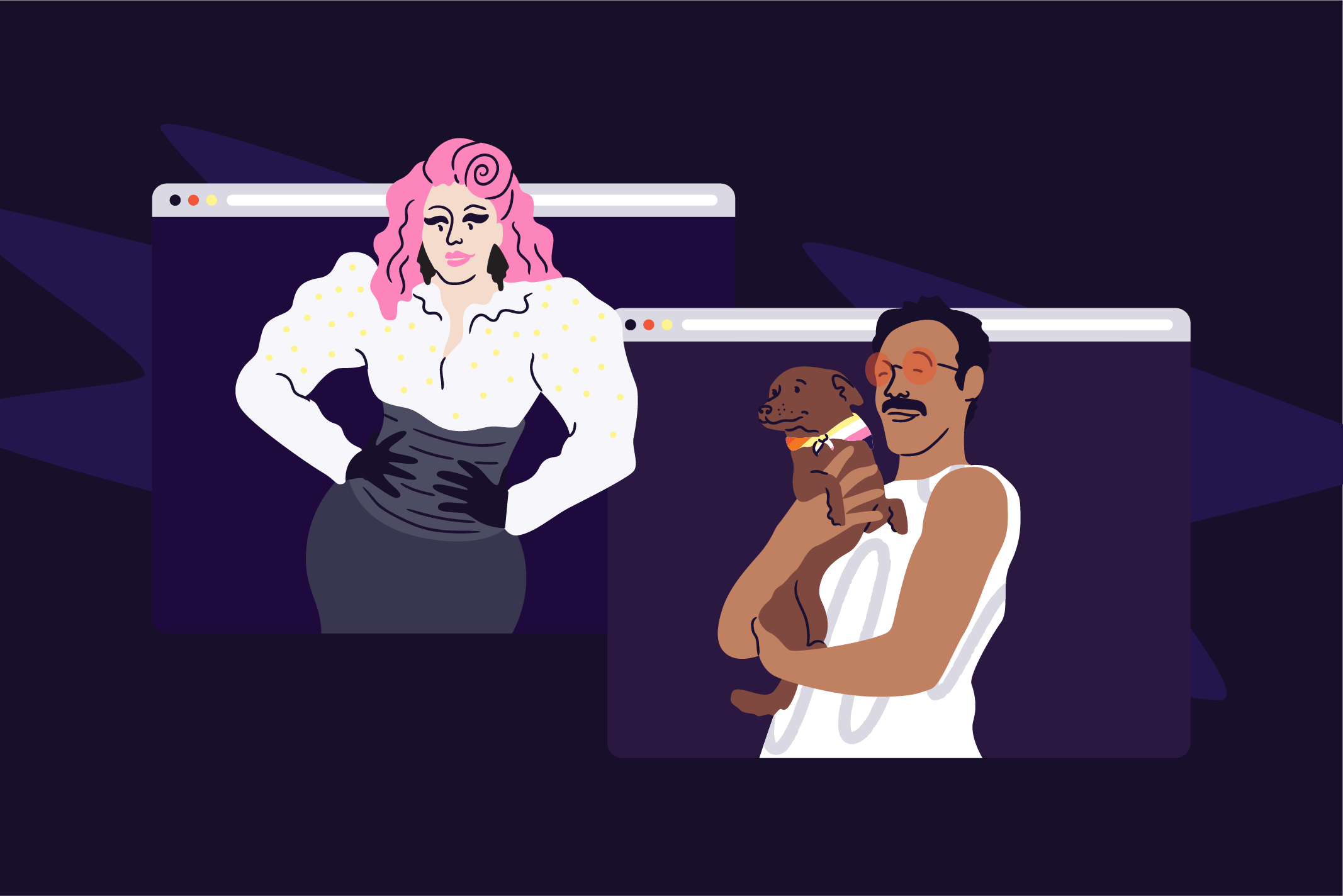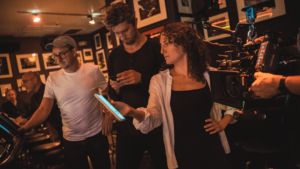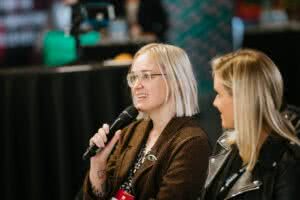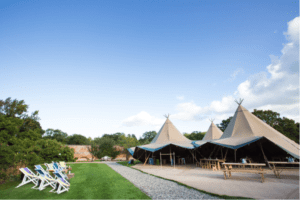When putting together an event, inclusivity is vital. It’s all about making sure guests feel comfortable, whether they’re attending an in-person or virtual event. As well as fostering a more positive atmosphere, diverse thinking will naturally attract a wider audience, giving you the chance to glean new information and make future events an even bigger success. Whether it’s physical accessibility or diversity in audience, speakers, and behind-the-scenes teams, the key thing is understanding the needs of attendees, whether they’re members of the LGBTQ+ community, people of colour, or those with physical disabilities or mental health conditions.
Jo Bligh, an experienced curator, producer, and Artistic Director of Thorny, a platform for the underrepresented voices of Bristol and beyond, has a lot to share on this topic. Her work involves creating colourful events that “place inclusion at the heart,” inviting a wide range of artists and providing a space for lesser-heard voices. Although Bligh stresses that there’s no single way to approach inclusivity, here are their top tips on how to communicate with a diverse audience and produce events that welcome everyone.

© Sarah Koury / KoLAB Studios
Tip 1: Remember that inclusion is an aspiration
Inclusion isn’t something that can ever be fully achieved or completed, but an aspiration we should be continuously plugging away at.
The reality is that no amount of work or money you put in can guarantee that every person who attends your event feels included. You can’t control every aspect of your audience’s experience, so it’s better to focus your energy on identifying the barriers and challenges your event could introduce and then work on ways to dismantle them.
Inclusion isn’t something that can ever be fully achieved or completed, but an aspiration we should be continuously plugging away at.
Tip 2: Make it more than a box-ticking exercise
All too often, attempts at inclusion fall down when event creators treat it as a box-ticking exercise, instead of being part of the DNA of how an event is produced. Unfortunately, this is common in the arts where funders often require organisers to meet quantitative diversity targets, which results in programmes feeling tokenistic and leaves audiences feeling uncomfortable.
Instead, I believe it’s better to think of inclusion as a mindset or approach you can adopt when organising an event. The necessary quality that is key to this approach is empathy.
Tip 3: Represent the full spectrum of your audience
The biggest factor in someone feeling included at your event is that they feel represented. This could be seeing someone or something they relate to on stage or having the opportunity to feed into conversations about the event, how it’s run, and who it’s representing.
Ensuring panels, line-ups, and programmes represent a diverse range of backgrounds, identities, and opinions is crucial. But are there ways of opening up conversations about who gets booked to include more voices than just your own? This could take the form of a Facebook poll, or even forming a working group who make curatorial decisions.
Tip 4: Don’t fear failure
It’s okay to try out an early-stage idea and not get it perfectly right the first time – the important thing is that you’re trying. Many of the systems and processes we’ve implemented to make our events more inclusive started as experiments that have been refined over multiple events after observing them in practice.
We’ve also re-worked ideas that have been devised by other event creators, which can be particularly effective if that person has more experience working with (or is ideally part of) the community you’re looking to engage.
It’s okay to try out an early-stage idea and not get it perfectly right the first time: the important thing is that you’re trying.
If a system or process has been tried and tested by another promoter and is working for their audience, why not replicate it for yours? You could even get in touch with the event owner to ask them about it. Inclusion should be a collective responsibility for all event producers, and exchanging knowledge and advice can help to ensure we don’t repeat past mistakes.
Tip 5: Listen to your audience
An effective way to obtain real needs from your audience is by asking them. It’s important to recognise when we might be making assumptions about our audience’s needs instead of actually listening. It won’t be possible to do this for every aspect of your event, but feedback can be hugely valuable in improving our services and initiatives.
I recently posted a call-out on social media to ask what we can do to make our events more inclusive to non-drinkers. Many tee-total attendees responded with a range of suggestions, including some trivial changes we can make immediately – and at little or no cost.
Tip 6: Communicate clearly
Be clear about what is and isn’t available. Your audience will be able to plan around this, as long as they’re informed. For example, if you know a barrier is unavoidable (like part of the venue being non-wheelchair accessible), it’s always better to tell people.
Be clear about what is and isn’t available. Your audience will be able to plan around this, as long as they’re informed.
It’s also good to provide a way for your audience to contact you directly with any specific requirements or questions, so let people know that you’re happy to help and how they can get in touch.
A few last steps
“Privilege is when you think something is not a problem because it’s not a problem to you personally.” – David Gaider
As well as taking Bligh’s advice into account, here are a few other ways to promote inclusivity and diversity in events:
- Ensure your behind-the-scenes teams are diverse. Whether it’s security staff or social media teams, hiring people from a wide range of backgrounds will give you additional insight and the ability to begin growing an inclusive community.
- Combine physical accessibility with technological assistance. Inclusivity doesn’t just mean focusing on wheelchair accessible events or creating other physical aspects like gender-neutral toilets. Technology also plays a vital role, especially if an event is being held online. For example, subtitle-generating software will help those who are deaf or hard of hearing. Similarly, some people will appreciate a tutorial link that shows them how to use the hosting platform.
- Pay for people’s time and effort. It’s important to compensate members of minority communities for their emotional and physical labour. If cash isn’t an option, offer them something of real value in return like tickets to future events.
Find out more about how to make events more inclusive from those who’ve paved the way.





